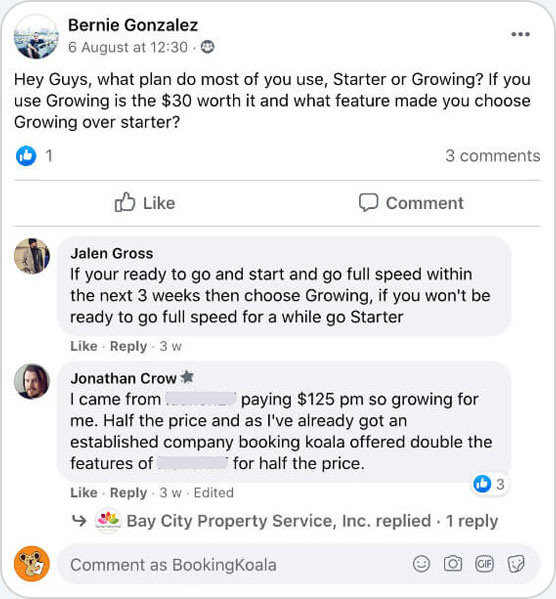
Starting a cleaning business can be an exhilarating process. As you progress along, many aspects may be foreign to you as a business owner. Search engine optimization (SEO) is one of the concepts you will face. Mastery of SEO will increase clients for your cleaning business. It allows your website to rank higher in search engine search results giving your business and brand great exposure and solidifying your cleaning business’s reputation. While you may have found that setting up your website was a relatively straightforward process, getting your website noticed and ranked high in search engine results can boost clients for your business. SEO is the process of increasing website traffic. The increase in traffic results in free brand exposure. By implementing a few elements into your already built website, you can increase your cleaning business’s number of clients.
The most important element you will need to adjust is the title tag of each web page. Next, the meta description for each webpage should be updated. Third, take time to research and understand keywords and how they can assist with SEO. With the three most important elements out of the way, there are several paths you can choose to take from this point. As a cleaning business, your services require a particular skill subset of which much knowledge can be shared. For example, within your website, you can dedicate a portion to create a “Household Hacks” page that will provide valuable tips and tricks for everyday cleaning conundrums. Finally, since you will likely include an image gallery of your before and after photos and use miscellaneous images throughout your website, you must remember to optimize your images for SEO.
Construct Unique Title Tags for Each Web Page
When a user types a search query into a search engine, the web page’s title tag is what is used to identify the page topic. Therefore, the title tag will be displayed in search results returned on a search query. Because of this, you will want to be sure that each of your web page’s title tags has adequately been edited and updated. Also, keep in mind that you want to have a variety of titles; otherwise, all of the content within your website will appear to be the same.
When placing the title tag, ensure it is placed between the header tags located at the start of the web page’s HTML code. A well-written title tag will typically not exceed 70 characters. Depending on the name you have chosen for your cleaning business, you may want to add it to the title tag of your pages. At the very least, your homepage’s title tag should include your cleaning business’s name. Another good point to remember is that the title tag is not the title displayed on your actual webpage. This is known as the on-page title. This is why there is wiggle room when creating a title tag. The title tag is meant to be enthralling and draw in users to your site while maintaining relevance.
When editing the title tag for your pages, try to center them around the main keyword of that particular page. By doing this, you create specific relevant titles that will allow users who are searching to better locate your business. For example, if you have a page that is filled explicitly with photographs from your previous jobs, the default when building your website may have the title of the webpage as “Gallery.” While the photos may indeed be a gallery, choosing a more specific title will allow your site to be better ranked within search results because the search terms will match the terms in your title tag. For example, instead of “Gallery,” a better option would be “Unbelievable Before and After Pictures – Local Residential Cleaning.” Making the title tag more specific will make it stand out more in search results and be more inviting to potential clients looking for the best residential cleaning service to use.
Use the Webpage Meta Description to Reel in Clients
While the title is, without a doubt, of great importance, additional information is also populated in search results. The meta description is located beneath the title tag and provides websites an opportunity to expand upon the title as written above. Hooking potential clients with the title is a significant step, and the meta description will be the missing piece that will allow you to reel in those potential clients who took interest due to the presented title. Keep in mind that meta descriptions are not factors used to rank your website, but they still weigh heavily due to their indirect effects. If no effort is made to customize the meta description, your business may be missing out on valuable customers because Google will randomly select what text it believes is most relevant and display that, whether it be a complete sentence or fragments cut off and unintelligible. Having a personalized meta description can assist you in expounding on your title and painting a small picture of what the reader can expect if they click on the link. This description is also vital in convincing users to click on your web page. Any terms you happen to include in your description, and that are also in the user’s search terms, will be in bold, drawing more clients to your cleaning business.
The composure of a meta description will simplify over time. Generally speaking, a description of fewer than 155 characters is sufficient. Succinct yet of high quality is the end goal. Remember to be extra vigilant regarding spelling and grammar when updating your meta description. Though it is a concise blurb, any typos or grammatical errors that go unnoticed can result in decreased results. Individuals may be untrustworthy of a business that allows typos to get past them, or they may find the oversight unprofessional and judge the business’s services off of a simple typo or incorrect use of grammar. If at all possible, have someone else review your description before having it go live. Sometimes a second set of eyes can quickly point out mistakes that were somehow missed.
Review Keyword Importance and Implement Changes
Developing an eye-catching title tag and edge-of-your-seat meta description may seem like enough work for you to pause for a moment. However, once you are ready to jump back in, you will want to deep dive into the world of keywords. Keywords are, in a sense, what makes the search engine world go ’round. Keywords are helpful because if you include the correct ones naturally throughout your website, there is an increased chance that a potential client will choose to click on your link. For example, if your cleaning services are specifically for residents or commercial businesses located in Tucson, AZ, then you can increase your visibility in specific search results by including keywords in each of your pages. For example, on your homepage, you could be sure that your introduction has a sentence similar to this: “On-Time Cleaning Services provides cleaning services for Tucson, AZ five days a week!” See how this is a natural sentence, but “cleaning services for Tucson” could be your target keyword. Natural inclusion of keywords will ensure your content is rated relevant and provide a more remarkable ability to rank higher in returned results of a search.
When determining which keyword to focus on for each page, try to focus on long-tail keywords initially. Long-tail keywords are exactly what they sound like, extended versions of their short-tail keyword counterparts. Short-tail keywords are identifiable due to containing one or two words, whereas long-tail keywords tend to have three to four words. While it may seem counterproductive to choose a longer keyword, for a new business fresh into the world of SEO, long-tail keywords are your best opportunity to gain more clients for your cleaning business. Short-tail keywords are those such as “carpet” or “windows.” These kinds of keywords have insurmountable competition making it highly unlikely that you will ever rank on high enough a page for a user to ever go far enough to find your cleaning business. On the other hand, long-tail keywords are more niche-specific and assist in increasing the odds that your business can rank high within search engine search results. Take the keyword “carpet,” for example. This could be transformed into the long-tail keyword “how do I clean a red wine carpet stain,” which will eliminate a multitude of competition due to the specificity of the keyword.
Establishing long-tail keywords that your business can rightfully compete using can prove to be an uphill task. There are dozens of offerings for keyword generators that will allow you to enter specific parameters and assist in generating related keywords. Free options, such as Google Keywords, are also available. Ultimately, developing winning keywords will boil down to taking time to tap into your creative genius and think outside of the box. The more creative you can get, the better results can be achieved.
One fact to note when you are developing and implementing keywords into your web page is that Google is aware that some people attempt to arbitrarily fill their web pages with unintelligible text meant only to include various keywords to rank higher in search engine results. Therefore, do not succumb to the temptation to stuff your page with keywords when creating your web page. Google notes pages that abuse keywords and label it as “over-optimization,” penalizing these sites instead of the boost they imagined they would receive because of the astronomical number of keywords packed into one page.
Develop a Specialized Page Titled “Household Hacks”
Sure, so you will likely take the idea, but not the name, but at least this will give you a general idea of how SEO can indeed generate more clients for your cleaning business. Creating your own specialized page dubbed “Household Hacks” can provide more assistance with gaining clients through SEO than most people are aware. While the service you provide and the quality of that service are extremely important, your cleaning business can boost its efforts to gain more clients by providing effective content to potential clients to strengthen the business reputation and reiterate that the company is built on knowledge and experience. Creating a “Household Hacks” page is a cost-effective method that will allow you endless opportunities to get your brand out into the public eye.
When generating content for your “Household Hacks” page, it is essential to remember that the relevance should be a direct link to your cleaning business’s services. If not a direct link, there should be some correlation. Otherwise, even if the content you provide is accurate and beneficial, there may be issues. If too many clicks result from topics so far from being related to cleaning services, it is not likely that the user will go much further than the initial page that brought them to your web page. Try to be original, or if you want to present something well-known already, put an innovative spin on it to make the content fresh and unique. One example of your first topic covered could relate to the long-keyword we referenced previously, “how do I clean a red wine carpet stain,” in which you provide a step-by-step guide on how to treat a red wine carpet stain. This is your opportunity to get creative. A red wine stain is just one of many possibilities. If you know of specific “hacks,” you are willing to share with the world, here is the perfect place to present them. While you want to provide valuable content, make sure you remember incorporating keywords as you are developing your content.
Each time you link to a new page for your “Household Hacks” section, make sure you incorporate the title tag and meta description in the new pages. Providing quality content quickly and consistently will assist you in gaining more clients for your cleaning business. People all over are intrigued by the information they find on the internet. If you generate solid content that ignites interest in people, they will begin to share links across various platforms, increasing your site reputation and assisting your cleaning business’s web page in climbing higher in the search engine result rankings.

Join Our Facebook Community
Join Facebook GroupImproving Photographs for Search Engine Optimization
You may have been interested in adding photographs to your website, or you may already have something similar to a “Gallery” set up on your website. Either way, images must be given the proper review because images can affect search engine rankings. While images may seem odd to play any role in SEO, data has indicated this phenomenon is warranted. Web pages that contain images render the content easier to understand, increasing the likelihood that the content will be read or shared. It is suggested that each of your web pages contain at least one picture. The reason for this is because search engines view pages with photos as more engaging and valuable.
One of the most prominent elements to remember is that image sizes need to be reviewed, especially if you are a business that will upload numerous photos. Everyone has probably visited a site or two in which the image was so large or incorrectly scaled that it degraded the experience of navigating the website, possibly to the point of exiting the site altogether. This is why site speed is a factor in page rankings in search results. A page that takes a disproportionately more extended time to load will rank lower. Photos that are not adequately scaled tend to cause web pages to load extremely slow. As a result, care should be taken to double-check any images that have been uploaded to ensure that page functionality is not being affected.
Another valuable tip when reviewing your images is to optimize the image alt tag. An image alt tag can also be known as “alt attributes” and “alt descriptions.” Since web crawlers cannot see photos, this text allows the crawlers to understand what the images are about. By editing the alt tag to include specific picture details, you can increase the likelihood of your business being listed in search results since your image can be “seen.” Additionally, if a user is unable to view images for some reason, the alt tag will tell the reader what is there. This is especially useful if the photograph is essential to understanding the context of the remainder of the web page.
In general, SEO to gain clients for your cleaning business is not an unattainable goal. With the implementation of a few starter steps, your beginning by editing the business web page title tags and meta descriptions, your cleaning business can begin using SEO to its benefit. Next, a review of keywords will assist your cleaning business in pinpointing specific phrases which will allow your company a fair, competitive edge within search results. Once the core elements have been updated, create a specialized niche section, such as a “Household Hacks” section that provides tutorials, guides, and general knowledge regarding cleaning “hacks.” Finally, be sure to review photographs and add any alt tags to strengthen the likelihood your business will be shown in results. While this isn’t an all-encompassing list of possible SEO tactics, beginning with this will allow your cleaning business to start to see an increase in new clients.

